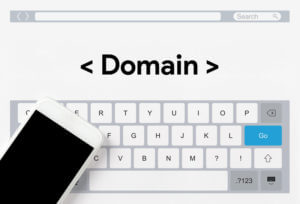Introduction
In today’s digital world, having a website is essential for individuals and businesses alike. Whether you’re a freelancer, a small business owner, or an aspiring blogger, a website provides a platform to showcase your work, connect with your target audience, and establish your online presence. If you’re wondering how to get a website, this comprehensive guide will walk you through the essential steps involved in creating your online space. From planning and design to domain registration and hosting, we’ll cover everything you need to know to get started.
1. Define Your Purpose and Goals
Before you start building your website, it’s crucial to define its purpose and goals. Ask yourself what you want to achieve with your website. Are you creating an online store to sell products, a portfolio to showcase your work, or a blog to share your expertise? Understanding your goals will help you make informed decisions throughout the website development process.
2. Plan Your Website Structure
Effective planning is key to building a successful website. Start by identifying the key pages your website will need, such as a homepage, about page, product/services page, contact page, and any additional pages specific to your goals. Consider the content and functionality you want on each page. A sitemap will help you visualize the structure and navigation of your website.
3. Choose a Domain Name
Selecting the right domain name is crucial as it represents your website’s identity. Choose a name that is easy to remember, relevant to your brand or niche, and ideally uses common extensions like .com, .net, or .org. Use domain registration services like GoDaddy, Namecheap, or Bluehost to search for and register your chosen domain.
4. Select a Hosting Provider
Website hosting is the process of storing your website’s files on a server and making them accessible to visitors. Choose a reliable hosting provider that offers good uptime, fast loading times, and excellent customer support. Consider factors such as storage space, bandwidth, security features, and scalability. Popular hosting providers include Bluehost, SiteGround, and HostGator.
5. Choose a Website Building Platform or Content Management System (CMS)
Selecting the right website building platform or CMS is crucial for website development. Popular options include WordPress, Wix, Squarespace, and Joomla. Evaluate the features, flexibility, ease of use, and scalability of each platform. Consider your technical expertise, customization needs, and the specific goals of your website. WordPress is highly recommended for its flexibility and extensive plugin ecosystem.
6. Design and Customize Your Website
Designing your website involves selecting an appropriate theme or template that aligns with your brand identity and goals. Consider the layout, color scheme, typography, and overall aesthetics. Customize the design elements to create a unique look for your website. Most website building platforms offer drag-and-drop interfaces, allowing you to easily customize the design without coding knowledge.
7. Create Engaging and Relevant Content
Compelling and relevant content is the backbone of a successful website. Craft clear and concise copy that effectively communicates your message to your target audience. Incorporate high-quality images, videos, and graphics to enhance the visual appeal. Use a consistent tone and style throughout your content. Implement a user-friendly navigation structure to help visitors easily find what they’re looking for.
8. Implement Functionality and Features
Enhance the functionality of your website by integrating plugins, widgets, or extensions based on your specific needs. For example, if you’re running an e-commerce website, you’ll need a shopping cart and payment gateway integration. If you want to collect user feedback, a contact form or a comments section will be essential. Consider adding social media sharing buttons, search functionality, and analytics tools to track visitor behavior.
9. Optimize Your Website for Search Engines
Implementing basic search engine optimization (SEO) techniques will improve your website’s visibility in search engine results. Research and incorporate relevant keywords into your content, meta tags, and headings. Optimize your images by using descriptive file names and alt tags. Ensure your website has a clean URL structure, optimized page load speed, and mobile responsiveness.
10. Test, Launch, and Maintain Your Website
Before launching your website, thoroughly test its functionality, usability, and compatibility across different browsers and devices. Ensure all links are working correctly, forms are functioning, and the design is consistent. Once you’re satisfied, it’s time to launch your website. Promote it through various channels such as social media, email newsletters, and business cards. Regularly update your content, monitor website performance using analytics, and keep your software and plugins up to date to ensure security and stability.
Conclusion
Creating a website may seem like a daunting task, but with careful planning and the right tools, it can be a rewarding and fulfilling experience. By following the steps outlined in this comprehensive guide, you’ll be well on your way to getting your website up and running. Remember, building a successful website is an ongoing process, so continue to adapt and refine your site to meet the evolving needs of your audience. Embrace the opportunities that a website offers and enjoy the benefits of a strong online presence.











